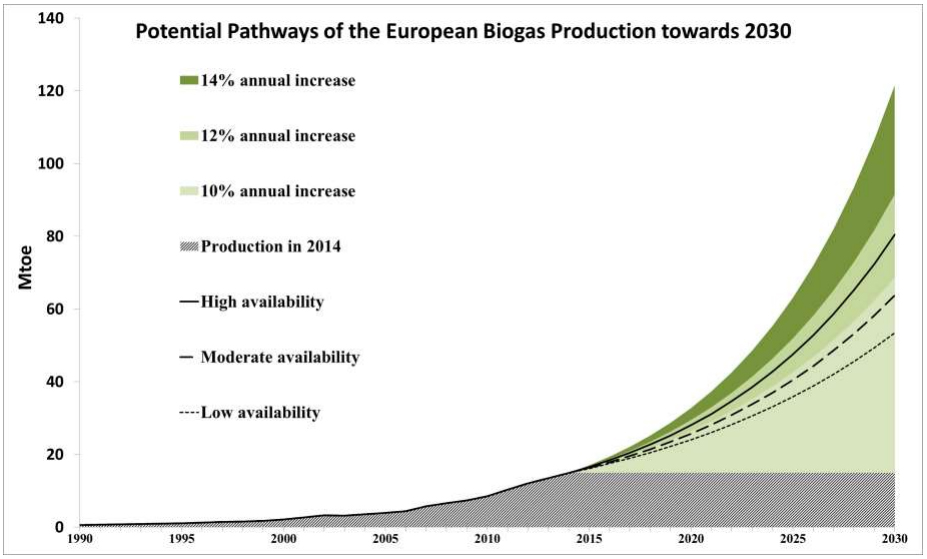Biogas is used in energy production as a renewable energy source. Biogas is composed of methane gas, carbon dioxide, nitrogen, hydrogen and carbon monoxide. It occurs naturally in compost heaps, as swampgas, and as a result of enteric fermentation in cattle. Biogas can also be produced in anaerobic digesters from plant or animal waste or collected from landfills. It is burned to generate heat or used in combustion engines s to produce electricity. The fossil fuel, natural gas, is primarily methane too but usually of a higher quality than biogas and with a mix of other combustible hydrocarbons. Biogas constitutes a sizeable and renewable form of energy, with European production. In the EU, energy production from biogas production has increased from just 167 PJ in 2005 to 654 PJ in 2015, with a biogas volume increasing from 2.5 billion m3in 2000, to 18 billion m3 methane equivalent in 2015, representing half of the global biogas production (WBA, 2017).

Biogas upgrading to biomethane through different technologies has started as an alternative to the direct use of biogas for heat and power generation. It can be used directly as a transport fuel in engines in Natural Gas Vehicles that are widely available. Due to the very low GHG emissions from the use of biomethane in vehicles, this is among the best options as renewable fuel in transport and thus biomethane could contribute to the renewable energy targets in this sector. In this context, the use of gaseous biofuels in transport, including biomethane is increasing, in several EU countries (Sweden, Germany, Finland, etc.), in China, United States and other countries. The largest market for the use of biomethane as a transport fuel is the European Union, with a combined 160 million m3 of biomethane in 2015 (Eurostat, 2017).
